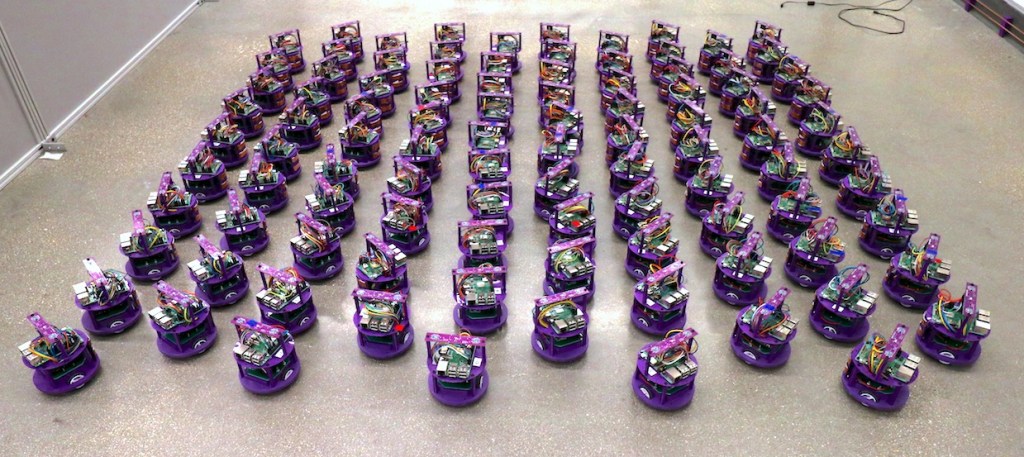WHY THIS MATTERS IN BRIEF
Small, cheap robots that can swarm together and transform themselves to accomplish a wide variety of different tasks make for a very hard to beat proposition.
 Interested in the Exponential Future? Join our XPotential Community, future proof yourself with courses from our XPotential University, connect, watch a keynote, or browse my blog.
Interested in the Exponential Future? Join our XPotential Community, future proof yourself with courses from our XPotential University, connect, watch a keynote, or browse my blog.
One of the science fiction technologies that we have yet to realise, even as we see holograms and light sabers become real, is the development of programmable materials and smart dust that are able to come together and form any shape on command in real time – even though there have been some awesome developments in the field of polymorphic materials that could one day create the ultimate in shape shifting robots like the shape shifting liquid T-1000 robot in the Terminator movies.
Before we realise this new world though in the meantime the best we can do it seems is create swarms of small autonomous robots that can come together, like the Transformers in the movies, to create increasingly complex shapes, and it’s a compelling research area in robotics.

100 autonomous swarming robots…
With a robot swarm, like the ones I’ve shown off before, you can often accomplish tasks that would be impractical, or even impossible, for larger robots to do in a way that’s much more resilient and cost effective than larger robots could ever be.
The tricky thing though is getting a swarm of robots to work together to do what you want them to do, especially if what you want them to do is a task that’s complicated or highly structured. It’s not too bad if you have some kind of controller that can see all the robots at once and tell them where to go, but that’s a luxury that you’re not likely to find outside of a robotics lab.
Researchers at Northwestern University in the US have been working on a way to provide decentralized control for a swarm of 100 identically programmed small robots, which allows them to collectively work out a way to transition from one shape to another without running into each other even a little bit.
The process that the robots use to figure out where to go seems like it should be mostly straightforward – they’re given a shape to form so each robot picks its goal location, where it wants to end up as part of the shape, and then plans a path to get from where it is to where it needs to go. But using this method you immediately run into two problems.
First, since there’s no central control you may end up with two or more robots with the same goal, and second, there’s no way for any single robot to plan a path all the way to its goal in a way that it can be certain won’t run into another robot.
In order to solve these problems though the researchers made sure all the robots are all talking to each other as they move they don’t just avoid one another but they also know where each other is going and whether it might be worth swapping destinations. Furthermore, since the robots are all the same they don’t really care where exactly they end up as long as all of the goal positions are filled up, and if one robot talks to another robot and they agree that a goal swap would result in both of them having to move less, they go ahead and swap. The AI algorithm they all rely on then makes sure that all goal positions are filled eventually and also makes sure they avoid running into each other through judicious use of a “Wait” command.
What’s really novel about this latest approach though is that despite the fully distributed nature of the algorithm it’s also provably correct, and will result in the guaranteed formation of an entire shape without collisions or deadlocks, and as far as the researchers know, it’s the first algorithm to do this.
It also means that since it’s effective with no centralized control at all, so you can think of “the swarm” as a sort of Borg-like collective entity of its own, which is pretty cool – so long as they don’t all team up though to take over the world as Elon Musk keeps talking about…
Source: IEEE
















